🛡️ The Ukraine Coalition 2025: European Strategy or Strategic Overreach?
In 2025, the Ukraine Coalition—once a symbol of transatlantic unity—is evolving into a deeply European project. With U.S. support wavering, EU capitals are under pressure to prove that Europe can shoulder the military, economic, and political burden of defending Ukraine. But is this a sign of growing strategic autonomy—or a case of geopolitical overstretch?
Drawing on updates from Financial Times, AP News, Business Insider, and official EU briefings, this article unpacks the shifting alliances, funding strategies, and the deeper question facing Brussels: can Europe lead without Washington?
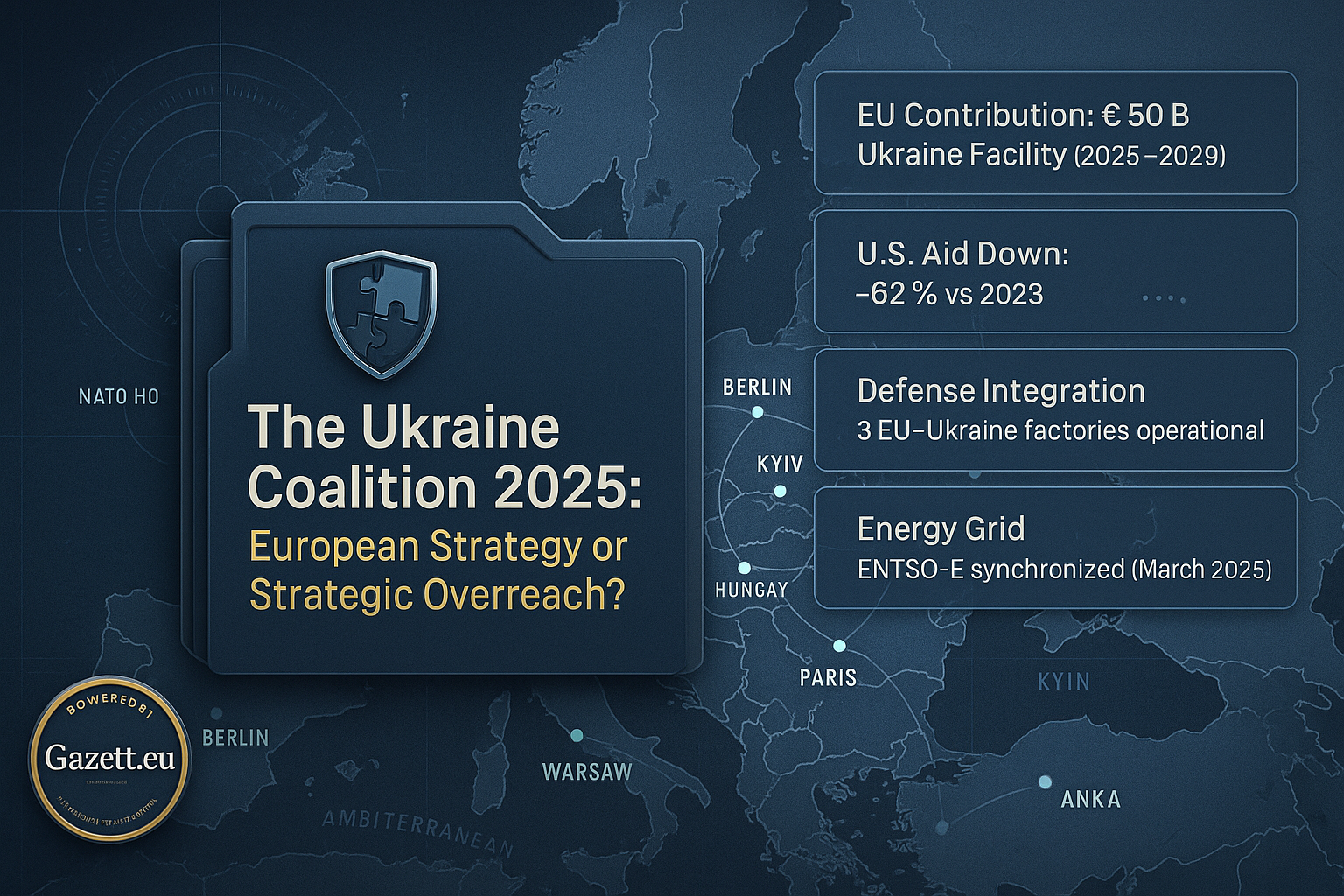
📷 Visual: Europe’s Coalition Strategy in Ukraine – Military Autonomy or Diplomatic Overstretch?
📚 Article Overview
- 1. The U.S. Retreat – What Changed in 2025?
- 2. Brussels’ Response – Strategic Autonomy or Crisis Management?
- 3. From Donations to Production – EU-Ukraine Defense Integration
- 4. Energy Front – Integrating Ukraine into Europe’s Grid
- 5. Coalition Funding – Who Pays, Who Decides?
- 6. Diplomacy and Ceasefire – Are We Nearing a Negotiated Endgame?
- 🎥 Real Snippets & Industry Videos
- 📝 Conclusion + Takeaways + Strategic Matrix
🇺🇸 The U.S. Retreat – What Changed in 2025?
By mid-2025, the U.S. pivoted away from its central role in the Ukraine war coalition. With a new Republican-led administration in Washington, American military assistance was scaled down dramatically. While symbolic support continues, pressure is mounting on Kyiv to accept negotiations—even at the cost of territorial concessions.
- 📉 Military aid dropped by over 60% compared to 2023 levels, with no new long-range systems approved this year. (Source: AP, April 2025)
- 🧭 Strategic ambiguity has replaced clear doctrine—Washington now urges "regional leadership" without leading directly.
- 🗳️ U.S. domestic opinion has shifted: 55% of voters now believe “Europe should take the lead” on Ukraine, according to Pew Global Tracker (March 2025).
This recalibration has sparked fears of a leadership vacuum in NATO. EU officials, once reliant on bipartisan U.S. backing, are scrambling to realign security doctrines. Meanwhile, Ukraine’s position becomes increasingly precarious—caught between battlefield fatigue and waning foreign leverage.
Internal link to context: Can Europe Rely on Itself for Defense?
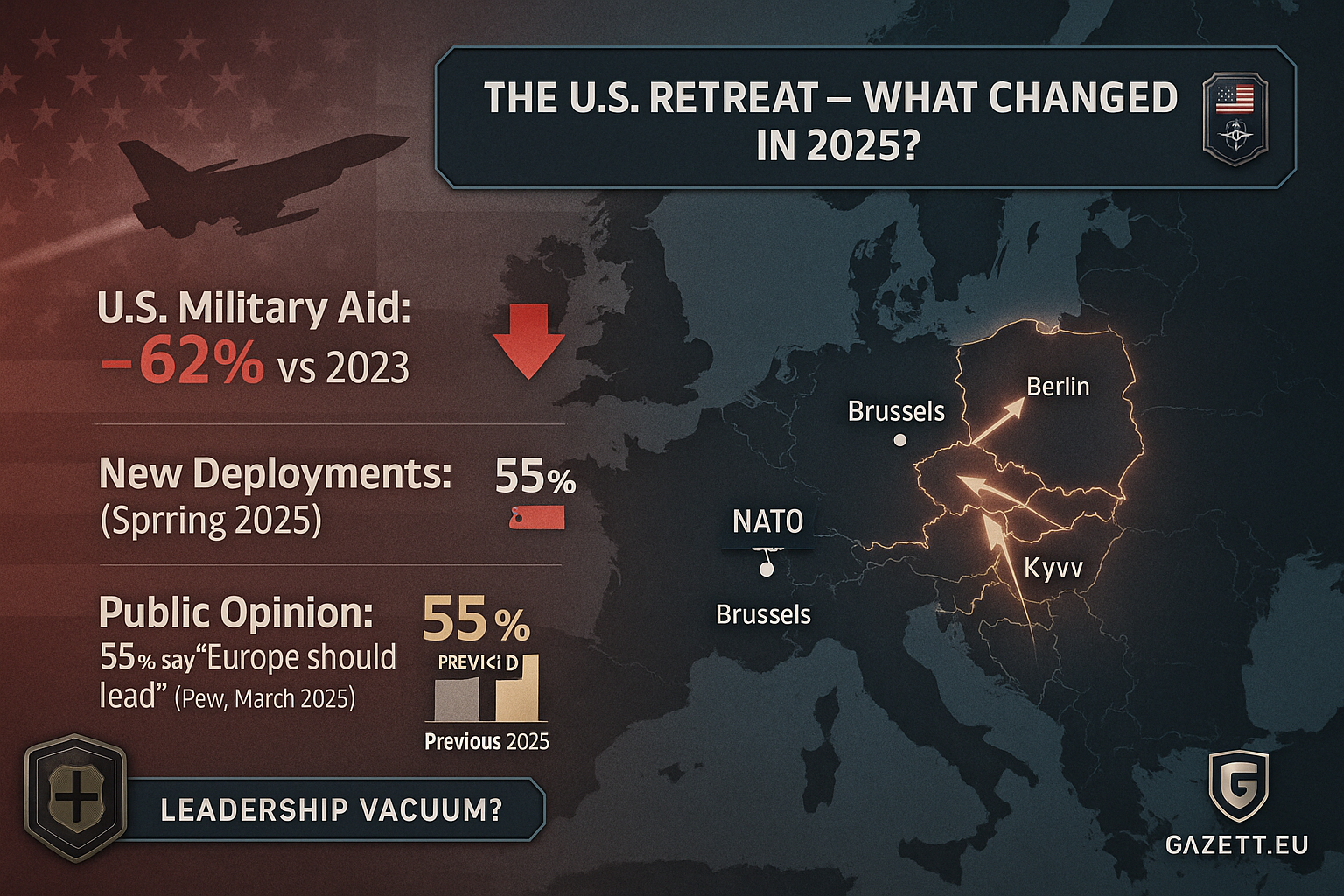
📷 Visual: The Decline of U.S. Military Leadership in Ukraine – 2025 Policy Map
🇪🇺 Brussels’ Response – Strategic Autonomy or Crisis Management?
With Washington pulling back, the EU finds itself in an uncomfortable spotlight. For years, “strategic autonomy” was an aspiration. In 2025, it’s a forced reality. The European Council has accelerated defense coordination, but without NATO’s core support, a critical question looms: can Europe act decisively—or only manage crises?
- 💶 The EU’s €150 billion defense fund is now being tapped for joint procurement of UAVs, cyber tools, and battlefield AI. (Source: EU Security Brief 2025)
- 🌍 Germany, France, and Poland are forming a “Continental Core” to coordinate rapid response forces across Eastern Europe.
- 🛡️ The proposed EU-only peacekeeping deployment to Western Ukraine is under review—smaller, more symbolic units may proceed without U.S. or UK forces.
Yet critics argue this is more coordination than strategy. Without unified rules of engagement or joint command, Brussels risks operating as a patchwork coalition. The challenge ahead isn’t just funding—it’s geopolitical credibility.
Internal link to context: Europe’s €150 Billion Defense Fund – Strategic Shift or Symbolism?
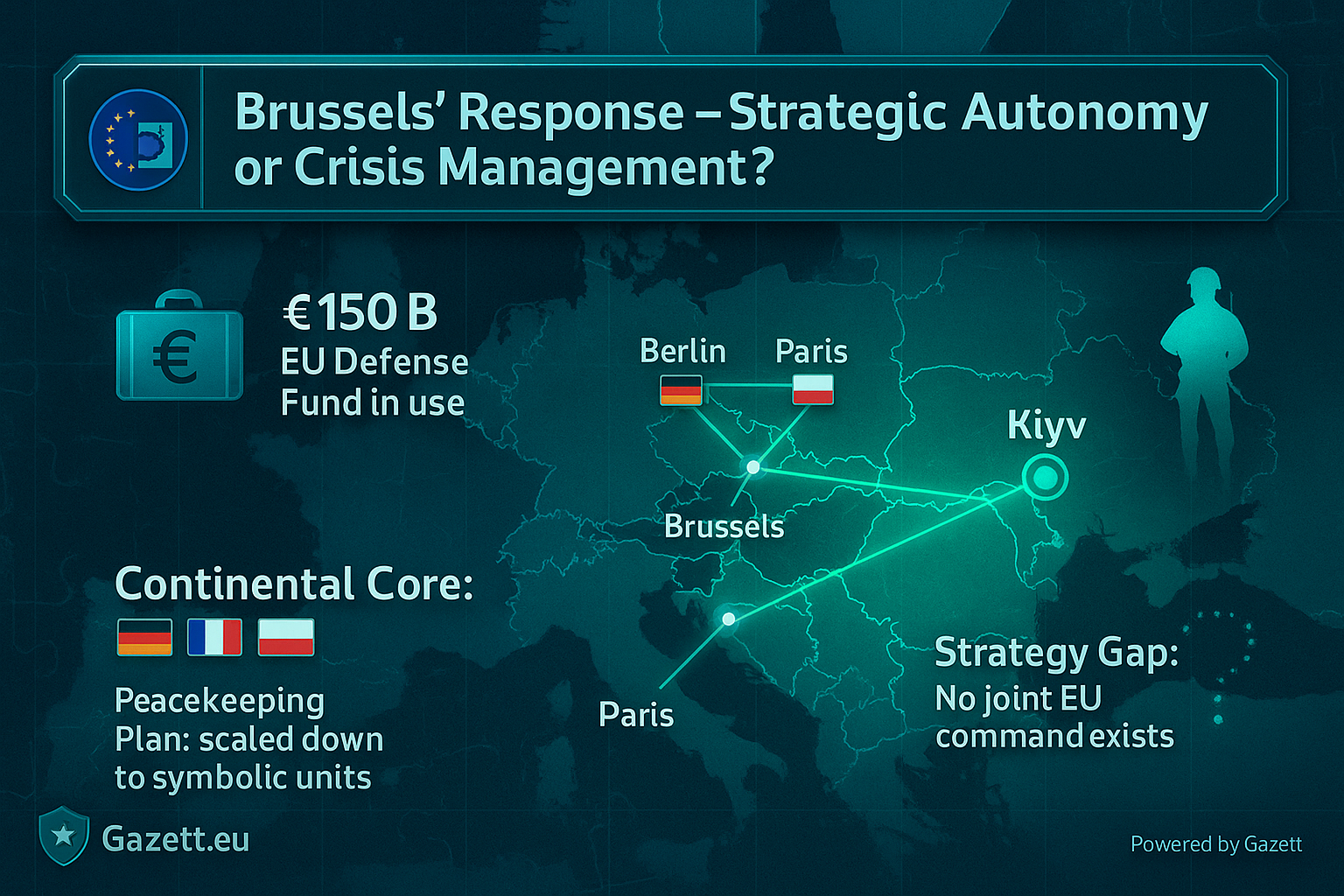
📷 Visual: EU Security Autonomy in Action – Coordination Map of 2025 Coalition
🏭 From Donations to Production – EU–Ukraine Defense Integration
In 2025, Europe’s Ukraine strategy is undergoing a material shift—from one-off arms donations to long-term defense industrial integration. Ukrainian arms factories, some located deep in the west, are being rebuilt with European funding and expertise. The goal? Turn Ukraine into a self-sustaining defense partner within the EU military supply chain.
- 🛠️ Rheinmetall, Thales, and Saab have signed joint-venture deals with Kyiv to co-manufacture ammunition and drones inside Ukraine. (Source: Business Insider, April 2025)
- 🚀 Ukraine's new arms cluster near Lviv is already supplying over 15% of its frontline equipment—up from 3% in 2023.
- 🔁 Brussels launched the “Defense Circularity Program” to recycle old NATO stocks into Ukrainian repair and production facilities.
This is a geopolitical upgrade, not just a logistical one. Ukraine is no longer just a recipient of aid—it’s being embedded into Europe’s military-industrial complex. This shift enhances long-term interoperability but also risks escalation if the facilities become direct Russian targets.
Internal link to context: Europe’s Military Tech Revolution – Drones, AI & Cyberwarfare
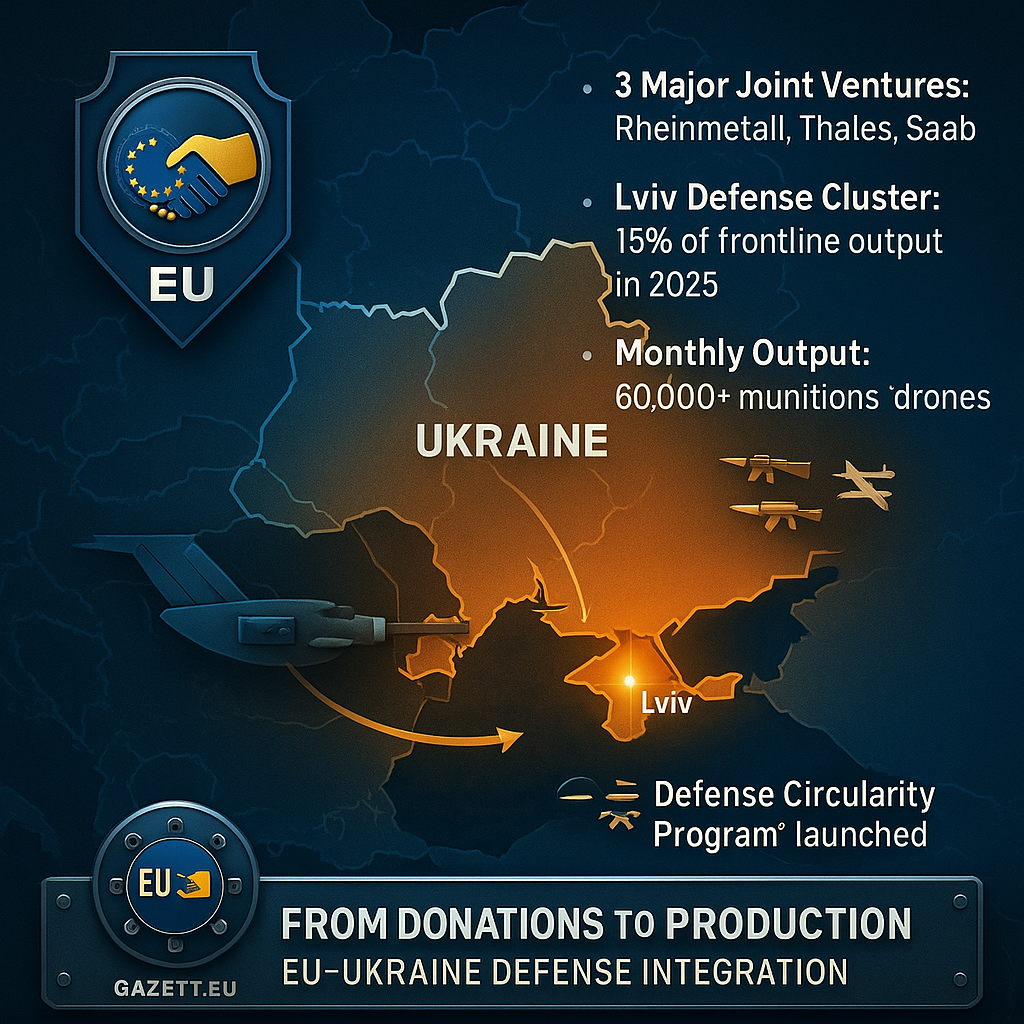
📷 Visual: Ukraine–EU Defense Industry Integration – Production Clusters in 2025
⚡ Energy Front – Integrating Ukraine into Europe’s Grid
Beyond weapons and diplomacy, energy security has become a quiet—but critical—pillar of the Ukraine Coalition. In 2025, the EU is accelerating its plan to fully integrate Ukraine into the European electricity and gas market. The strategy is twofold: stabilize Ukraine’s war-ravaged infrastructure, and reduce EU dependency on Russian energy flows.
- 🔌 Ukraine is now synchronised with the ENTSO-E grid—allowing direct cross-border energy flows to and from Poland, Romania, and Slovakia. (Source: EU Parliament Brief 2025)
- 💡 A €3.2 billion EU Energy Stability Package is funding power station repair, grid upgrades, and anti-cyber attack defenses inside Ukraine.
- 🌱 Ukraine’s long-term renewables potential—especially wind and bioenergy—is being fast-tracked for EU green integration programs.
This isn’t just economic aid—it’s energy geopolitics. By tying Ukraine into the European grid, Brussels aims to make the country “too connected to fail.” It also sends a clear signal: Ukraine’s future lies westward—electrically, politically, and economically.
Internal link to context: Portugal’s Green Energy Model – Can Lisbon Lead Europe’s Climate Shift?
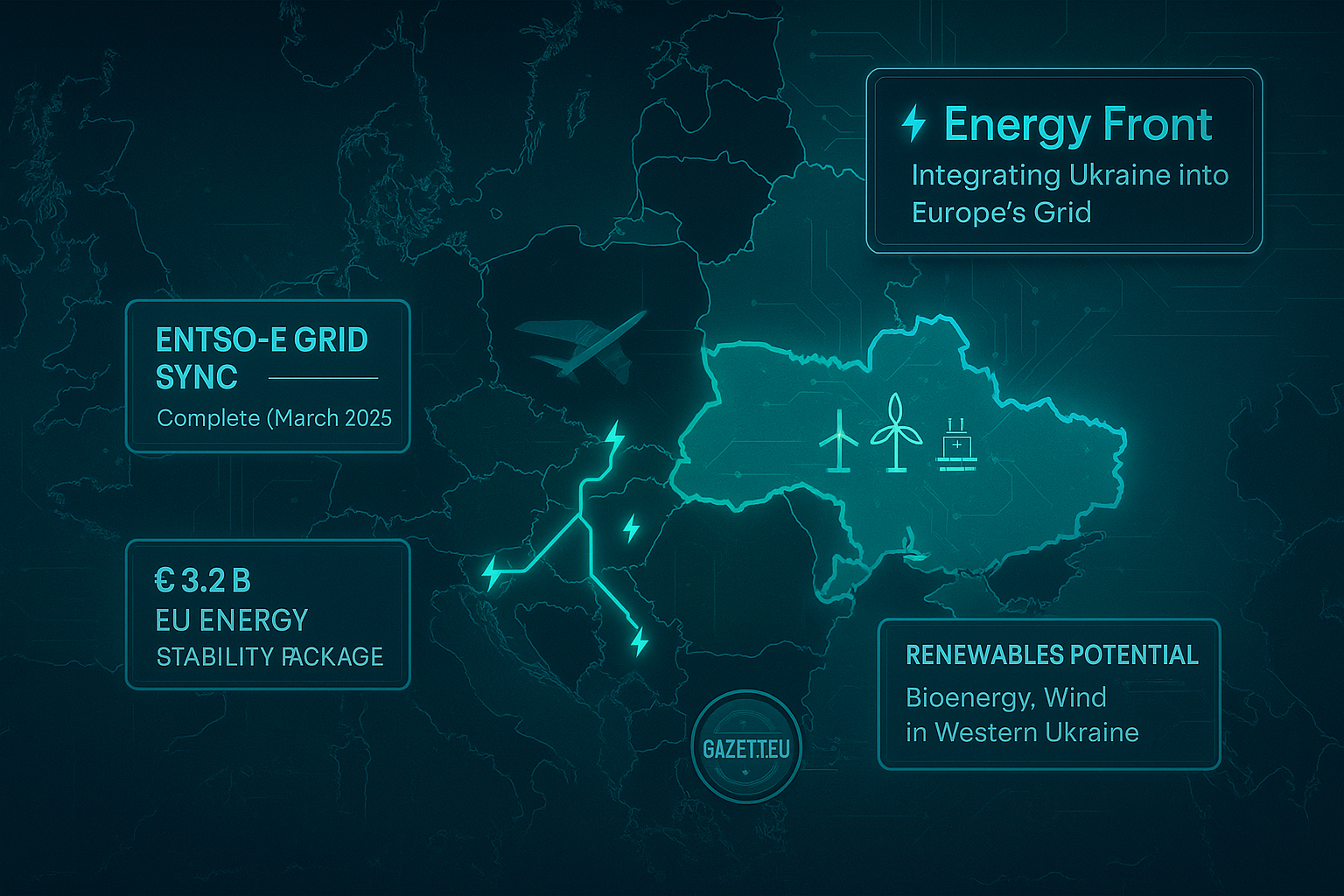
📷 Visual: Ukraine’s Energy Integration into the EU Grid – Strategic Link Map 2025
💰 Coalition Funding – Who Pays, Who Decides?
As the war enters its third year, the coalition’s biggest fault line is money. With U.S. funds drying up and Ukraine’s economy in freefall, European capitals face growing pressure to foot the bill. But who decides the allocation—and how long can EU taxpayers sustain a war economy?
- 📊 The EU’s Ukraine Facility—worth €50 billion over four years—is the bloc’s largest-ever financial commitment to a non-member. (Source: European Commission 2025)
- 🧮 Germany and France contribute over 44% of total coalition funding, but demand more budgetary oversight from Kyiv.
- 🪙 Poland, Estonia, and Czechia argue for a decentralized “fast aid” model to bypass Brussels bureaucracy for frontline logistics.
Behind the scenes, a quiet tug-of-war is unfolding: national parliaments versus EU institutions, donor fatigue versus wartime urgency. Without a clear governance model, the Ukraine coalition risks losing coherence—despite record-level funding.
Internal link to context: EU Economic Policy Shifts in 2025 – Impact & Priorities
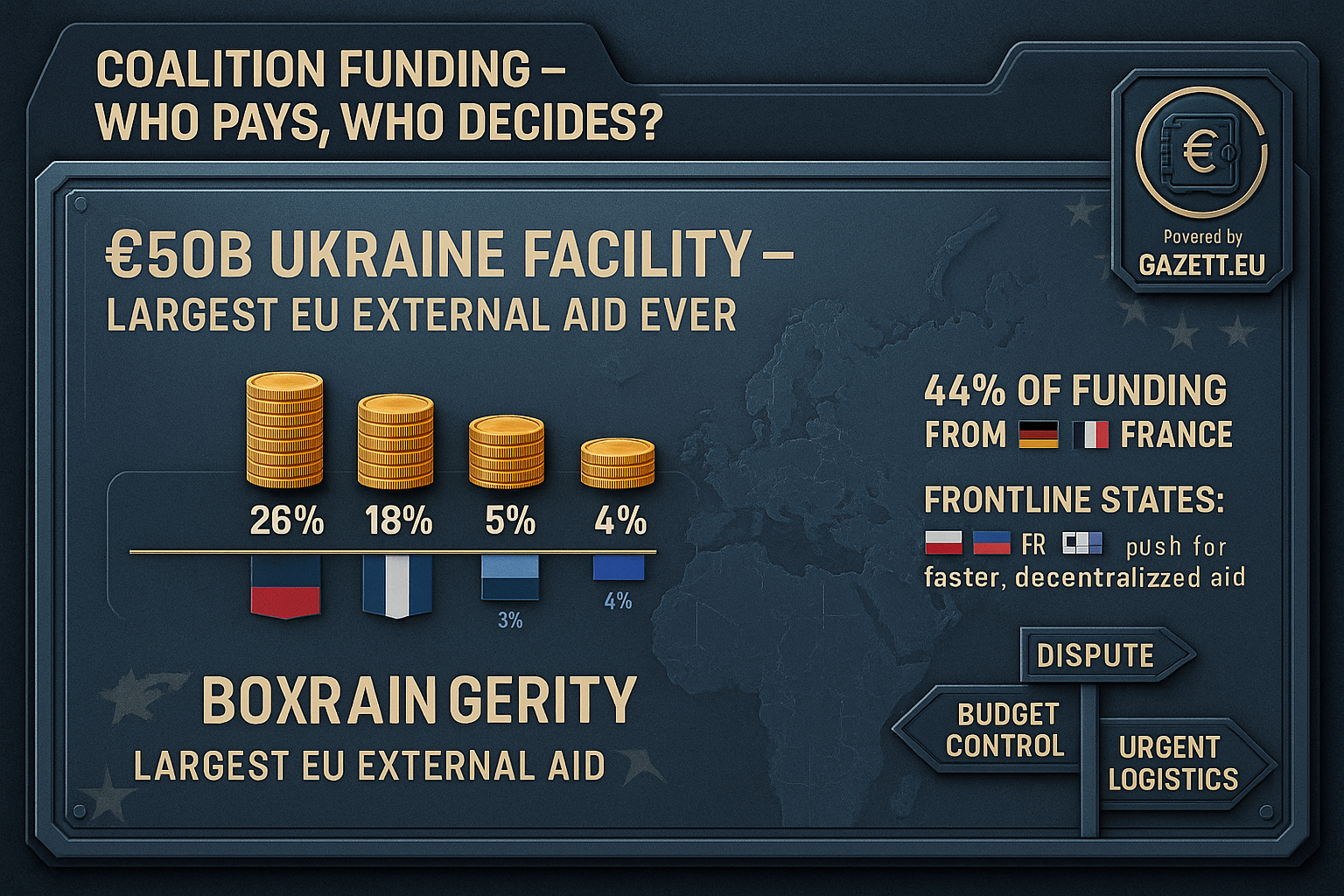
📷 Visual: Ukraine Coalition Funding Map – Contributions, Conflicts & Gaps (2025)
🕊️ Diplomacy and Ceasefire – Are We Nearing a Negotiated Endgame?
In early 2025, diplomatic noise is getting louder. While no formal ceasefire is in place, backchannel talks between Western European diplomats and Russian intermediaries have restarted. The goal: a cold peace that ends active conflict without resolving territorial questions. But Ukraine remains divided, and Europe is split between pragmatism and principle.
- 🕯️ France is pushing a “Security Truce” model—gradual disengagement tied to reconstruction aid and frozen front lines. (Source: Le Monde, March 2025)
- 🔇 Germany is holding “Track 2” dialogues with Russia and China-backed observers on sanctions phasing and prisoner exchanges.
- 🔐 Ukraine’s position hardens internally—polls show over 70% of Ukrainians reject any deal that recognizes Russian-held territory. (Kyiv Intl Polling Unit)
Europe’s role is increasingly that of a cautious broker. It wants peace, but not at the cost of credibility. The EU risks becoming a manager of contradictions: financing war while funding peace talks—arming Ukraine while negotiating with its invader.
Internal link to context: EU’s War Dilemma – The Ukraine Ceasefire Question
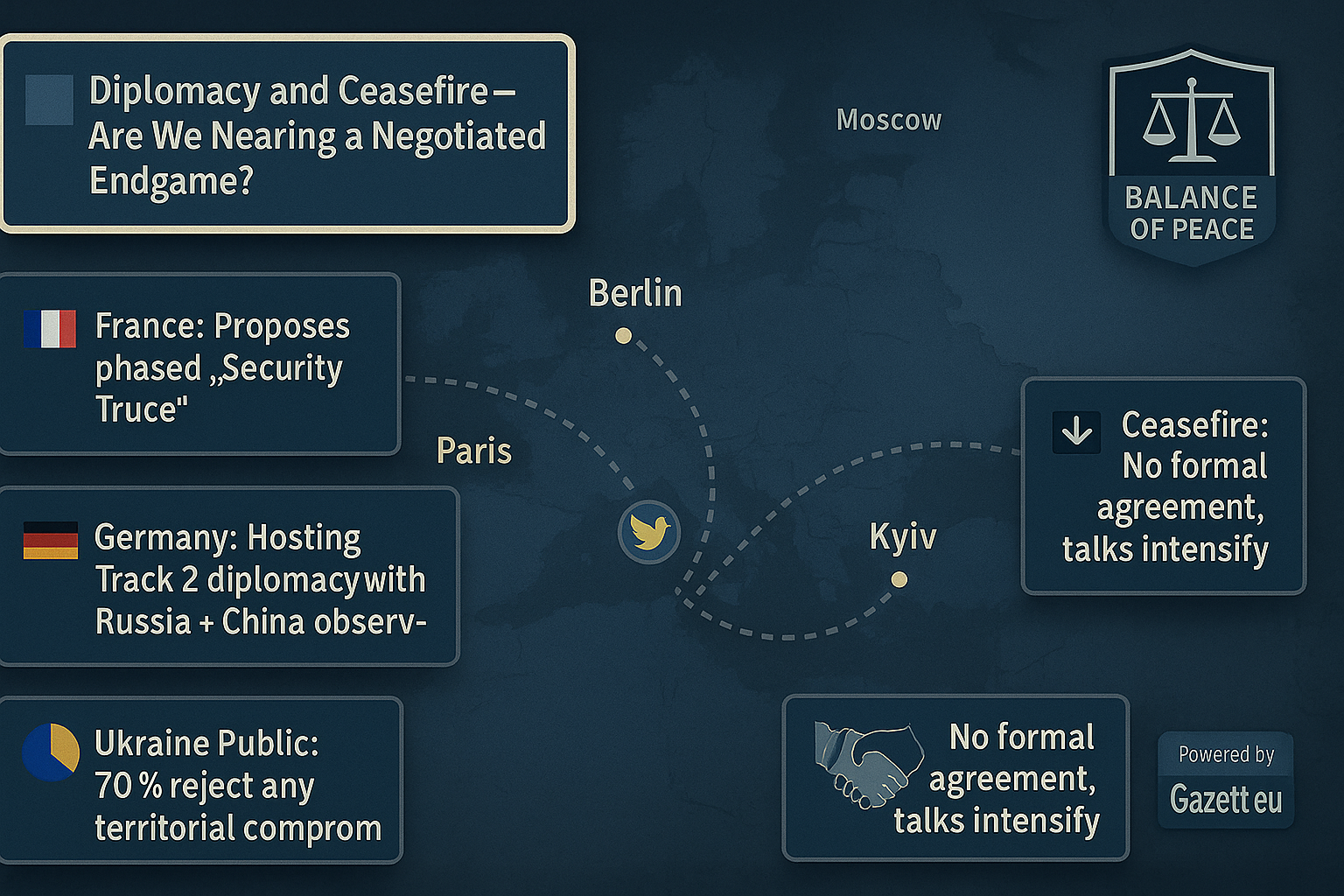
📷 Visual: Ceasefire & Diplomacy Zones – Who’s Talking, Who’s Stalling (Spring 2025)
📡 Real Snippets & Industry Announcements
🛡️ NATO confirms no additional U.S. deployments to Ukraine this spring. “EU allies are now the principal coordinators in regional defense.”
📅 April 10, 2025 · #NATO #RegionalCommand
🔧 New EU-backed drone production facility launches in Lviv with Rheinmetall tech. Monthly capacity: 60,000 units.
📅 April 22, 2025 · #DefenseCluster #EUUkraine
⚡ “Ukraine is now fully synchronized with the ENTSO-E grid,” says EU Energy Commissioner. Power trade begins with Poland and Romania.
📅 March 30, 2025 · #EnergyUnion #ENSTOE
🕊️ President Macron proposes phased “Security Truce” plan linked to reconstruction incentives and EU diplomatic normalization.
📅 April 3, 2025 · #Ceasefire #SecurityTruce
📝 Conclusion & Key Takeaways
The Ukraine Coalition in 2025 is no longer just a security compact — it's a test of Europe’s ability to lead, fund, and stabilize a major geopolitical conflict without American dominance. From weapons to energy to diplomacy, Brussels is walking a fine line between autonomy and overextension. The question isn't just about Ukraine's fate — it's whether the EU can emerge as a true global actor.
| Aspect | Details |
|---|---|
| Defense Strategy | Shift from NATO to EU-led coordination with focus on autonomy |
| Economic Ties | Massive EU funding (€50B+) and integration of Ukrainian industries |
| Energy & Infrastructure | ENTSO-E grid, renewables, and digital fortification underway |
| Diplomacy | Backchannel negotiations intensify, but ceasefire remains elusive |
Sources: Financial Times, AP News, Business Insider, European Parliament Briefs